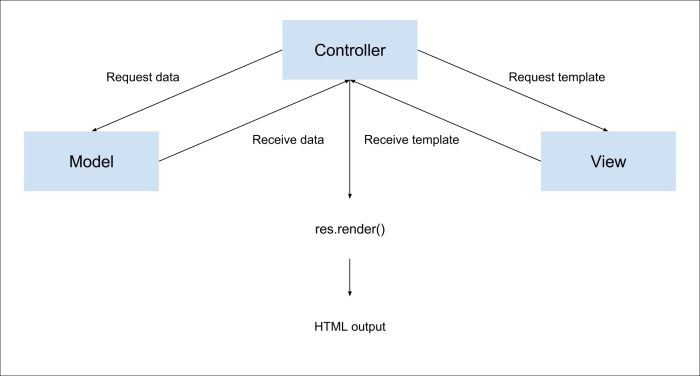Rendering views
A very common feature of web frameworks is the ability to render views. The basic concept is passing your data to a template engine that will render the final view usually in HTML. In the MVC pattern, your controller uses the model to retrieve the data portion and the view template to render the HTML output as described in the next diagram. The Express extendable approach allows the usage of many Node.js template engines to achieve this functionality. In this section, we'll use the EJS template engine, but you can later replace it with other template engines. The following diagram shows the MVC pattern in rendering application views:

Express has two methods for rendering views: app.render(), which is used to render the view and then pass the HTML to a callback function, and the more common res.render(), which renders the view locally and sends the HTML as a response. You'll use res.render() more frequently because you usually want to output the HTML as a response. However...
























































